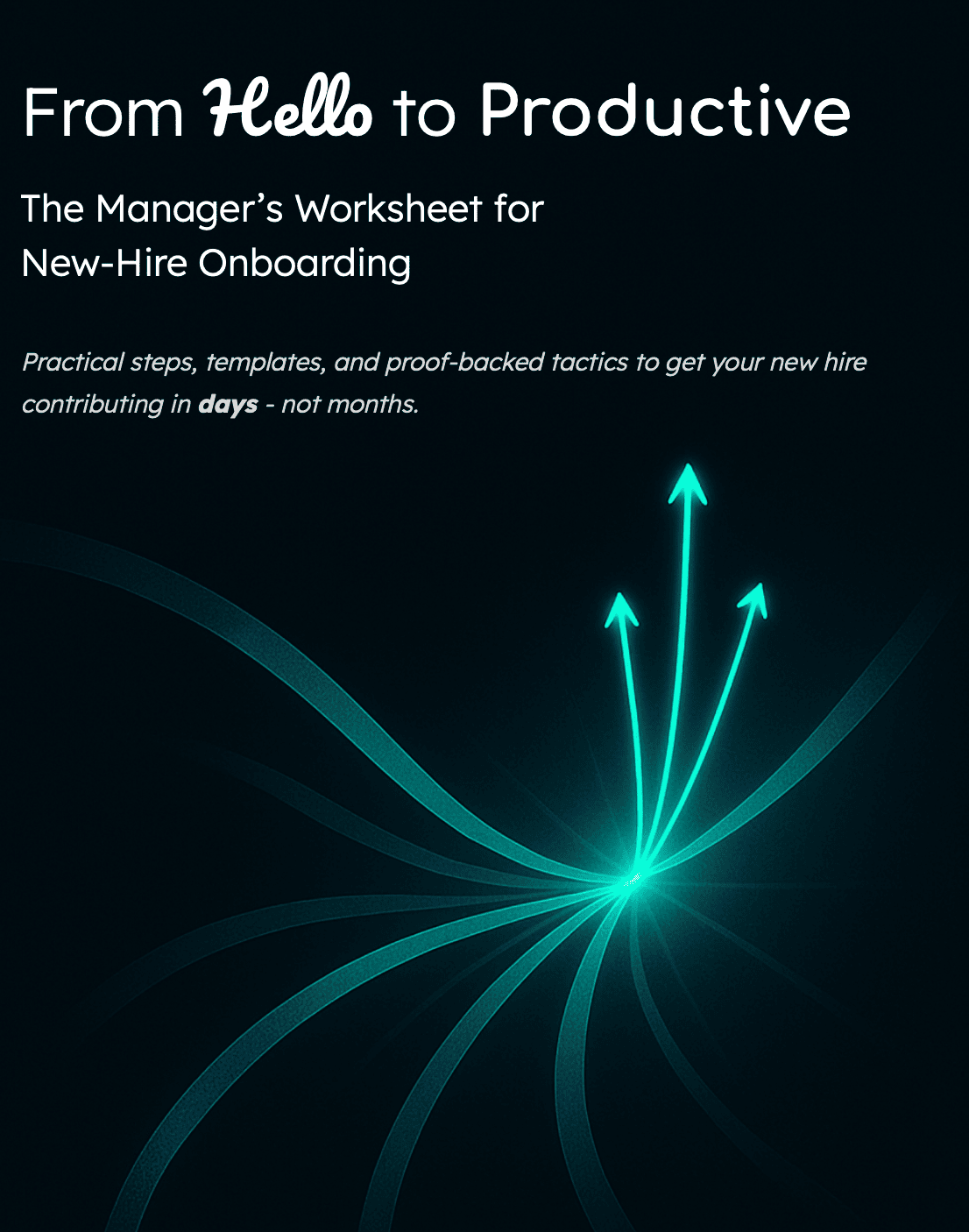
The first day at a new job is one of the most exciting professional moments. After months of searching, applying, interviewing, creating a picture in your head of what it must be like inside the company’s walls, you finally get to start. What will it be like? You want to set a strong tone, you’re bringing fresh and new experiences to this company. They are going to be so happy you are joining with all your fresh and new ideas. The company has a lot to learn.
Onboarding a new hire can be a stressful moment. After months of searching, conducting interviews, creating a picture in your head of what it must be like to have this candidate as an employee, you get to onboard your newest hire. What will they actually be like? You want to set a strong tone. You have a lot of battle worn processes and ways-of-working that might not sound glamorous, but they’ve been constructed over years by a strong culture. This new hire has a lot to learn.
This moment, in which two potential energy sources meet and turn kinetic, can spark momentum or misalignment—success depends on the right approach. As an organization, how can you give it the best chances to strike the right chord for both parties?

The Manager's Worksheet for New-Hire Onboarding

Day One Contribution
Over the past 10 years, I have onboarded over 50 engineers into the teams I’m responsible for. A principle I inherited from a mentor is “Day One Contribution” or, for engineers, “Day One Pull Request”. The idea is straightforward. Start the new hire, get them set up with their environment and access, and have an easy, straightforward change ready to go for them to ship it to production (or at a minimum get it merged) – on their first day. It’s hard to do elegantly, but ultimately worth it.
Contributing on day one does two things. First, it demonstrates that you have your house in order and are capable of shipping the same day — I’ll talk more about this in a future article on DevOps. Second, it sets the tone that you value shipping. That this company they’re joining isn’t operating theoretically, you’re shipping and there is opportunity to do it every day. This isn’t whip cracking, it’s demonstrating that you’ve created an environment for them to apply their craft safely and efficiently. Happy employees are the ones that get to do the thing they were hired to do.
Integrate & Impress
From the start, new hires are eager to prove their value, often seeking gaps they can fill. This enthusiasm is valuable, but it needs thoughtful direction. I’ve called this “new hire energy”. It’s refreshing, you want to harness it, but you don’t want them wasting that energy rehashing decisions that have low impact. If they do, it causes irritation with existing employees.
Get your ducks in a row. The flow here needs to be controlled, practiced, and impressive. Your organization’s knowledge is wide and deep. Decisions have been made over the years of your company existing, show them. If you don’t have a decision record repository, start one now. When big decisions come up, write a quick note about why. A paper trail like this can demonstrate the “when and why”.
Provide a new hire buddy. Schedule most of the day. Answer questions and guide the person. They are there to fill in the unwritten tales. An organization is a lot more daunting and unknown to a new hire that doesn’t know the first thing, and definitely not the nuances.
Give Them a Map
You hired a qualified person that mostly just needs direction. Most of the time, they just need to be pointed to the right thing at the right time. A lot of organizations rely on a “new hire onboarding” series of documents. These documents contain helpful links like “we monitor this service here”, or “go here to get an account”. Usually these are in a wiki or document, collecting dust until a new person shows up. If this is your first new hire in a few months (or a year!), it might be more out of date than you are willing to admit.
Wayfinder is a better map. It gives access to the connections your experts use every day. Rather than bury an outdated map of links in a dusty corner in your knowledge base, give the new hire access to what your experts actually use to navigate the system. Up to date, precise. Don’t make the new person hunt for the resources they need, only to find out that they’re out of date. Serve them timely and reliable resources as they experience your ecosystem. Give them the right connections at the right moments.
Whether you are the hiring manager or the new hire, you should enjoy your first day! They really can be special days that set the tone and right impression.
But don’t just hope — take action to make good first days. They make great next days.